#FAMOUS HINDU TEMPLES IN INDIA
Explore tagged Tumblr posts
Text
0 notes
Text
God - ಬೇಡಿದ ವರ ತೀರಿಸುವ ದೇವರು, ಆದರೆ ಹುಡುಗರು ಹುಡುಗಿಯರಂತೆ ದೇವಾಲಯಕ್ಕೆ ಹೋಗಬೇಕಂತೆ, ಆ ಕ್ಷೇತ್ರ ಎಲ್ಲಿದೆ ಗೊತ್ತಾ?
God – ಕೇರಳದ ಕೊಲ್ಲಂ ಜಿಲ್ಲೆಯ ಕೊಲ್ಲಾರ ಗ್ರಾಮದಲ್ಲಿರುವ ಕೊಟ್ಟಂಕುಲಂಗರ ದೇವಿ ದೇವಾಲಯದಲ್ಲಿ ವಿಚಿತ್ರ ಆಚರಣೆಯೊಂದು ನಡೆಯುತ್ತದೆ. ಇಲ್ಲಿನ ದೇವಾಲಯದಲ್ಲಿ ಪ್ರತಿ ವರ್ಷ ಮಾರ್ಚ್ನಲ್ಲಿ ‘ಚಮಯವಿಳಕ್ಕು’ ಉತ್ಸವವನ್ನು ಆಚರಿಸಲಾಗುತ್ತದೆ. ಈ ಉತ್ಸವದಲ್ಲಿ ಪುರುಷರಿಗೆ ಪ್ರವೇಶವಿಲ್ಲ. ಒಂದು ವೇಳೆ ಹೋಗಬೇಕೆಂದರೆ, ಅವರು ಹೆಣ್ಣು ಮಕ್ಕಳಂತೆ ಅಲಂಕರಿಸಿಕೊಂಡು ಹೋಗಬೇಕು. ಹೀಗಾಗಿ, ಅನೇಕ ಯುವಕರು ಹೆಣ್ಣು ಮಕ್ಕಳಿಗೆ ಕಡಿಮೆಯಿಲ್ಲದಂತೆ ಅಲಂಕರಿಸಿಕೊಂಡು ದೇವಸ್ಥಾನಕ್ಕೆ ಹೋಗುತ್ತಾರೆ. ಇದಕ್ಕೆ…
#Chamaya Vilakku festival#Famous festivals in Kerala#Hindu temple rituals#Indian temple customs#Kerala temple traditions#Kottankulangara Devi Temple#Kottankulangara festival 2025#Men dressing as women for temple entry#Unique temple rituals in India#Unusual religious festivals
0 notes
Text

Proud moments... A Documentary Film Sree Ollukkavu Sapthamathru Temple Thrissur Kerala My Second Documentary ►A Rare temple in Kerala. ►To remove Marriage Obstacles. https://youtu.be/-WAIQ9W_bDw?si=a8i58HtlNdpf9uC7 #sreeollukkavusapthamathrutemple #PrasanthUrath #kitcatdigitalmedia #KitcatMedia #ajishkumarrkrishna #templesinkerala #templesofindia #keralatourism #keralatemples
#A Documentary Film#Documentary on temple#prasanth india#prasanth urath#prasanthuraththrissur#prasanthkerala#prasanthuraththrissurkerala#kitcatmedia#kitcatmediaindia#kitcatmediakeralathrissur#Temples of Kerala#Hindu temples in Kerala#Top Most Powerful and Famous Temples in Kerala#prasanththrissurkeralaindia#Top 10 temples in Kerala#Most famous temple in Kerala
0 notes
Video
youtube
Sri Rajarajeswara Temple | Taliparamba | 108 ancient Shiva Temples of an...
#youtube#jothishi#rajarajeshwara temple#hindu temples#temples of india#kerala temples#shiva temples#famous shiva temples
0 notes
Text

Mumbai Airport Taxi Service Operator, Mumbai Airport, Mumbai, Maharashtra, India
WhatsApp: +919370314751 / 52
Cell: +917720079131 / 32
Cell: +919370314751 / 52
Mumbai Airport: Chhatrapati Shivaji International Airport
Chhatrapati Shivaji Maharaj International Airport, Mumbai, formerly known as Sahar International Airport, is the primary international airport serving the Mumbai Metropolitan Area, India.
Mumbai (formerly called Bombay): City in Maharashtra
Mumbai (formerly called Bombay) is a densely populated city on India’s west coast. A financial center, it's India's largest city. On the Mumbai Harbour waterfront stands the iconic Gateway of India stone arch, built by the British Raj in 1924. Offshore, nearby Elephanta Island holds ancient cave temples dedicated to the Hindu god Shiva. The city's also famous as the heart of the Bollywood film industry.

Mumbai Airport Taxi Service Operator, Mumbai Airport, Mumbai, Maharashtra, India
WhatsApp: +919370314751 / 52
Cell: +917720079131 / 32
Cell: +919370314751 / 52
Mumbai Airport: Chhatrapati Shivaji International Airport
Chhatrapati Shivaji Maharaj International Airport, Mumbai, formerly known as Sahar International Airport, is the primary international airport serving the Mumbai Metropolitan Area, India.
Mumbai (formerly called Bombay): City in Maharashtra
Mumbai (formerly called Bombay) is a densely populated city on India’s west coast. A financial center, it's India's largest city. On the Mumbai Harbour waterfront stands the iconic Gateway of India stone arch, built by the British Raj in 1924. Offshore, nearby Elephanta Island holds ancient cave temples dedicated to the Hindu god Shiva. The city's also famous as the heart of the Bollywood film industry.

Mumbai Airport Taxi Service Operator, Mumbai Airport, Mumbai, Maharashtra, India
WhatsApp: +919370314751 / 52
Cell: +917720079131 / 32
Cell: +919370314751 / 52
Mumbai Airport: Chhatrapati Shivaji International Airport
Chhatrapati Shivaji Maharaj International Airport, Mumbai, formerly known as Sahar International Airport, is the primary international airport serving the Mumbai Metropolitan Area, India.
Mumbai (formerly called Bombay): City in Maharashtra
Mumbai (formerly called Bombay) is a densely populated city on India’s west coast. A financial center, it's India's largest city. On the Mumbai Harbour waterfront stands the iconic Gateway of India stone arch, built by the British Raj in 1924. Offshore, nearby Elephanta Island holds ancient cave temples dedicated to the Hindu god Shiva. The city's also famous as the heart of the Bollywood film industry.

Mumbai Airport Taxi Service Operator, Mumbai Airport, Mumbai, Maharashtra, India
WhatsApp: +919370314751 / 52
Cell: +917720079131 / 32
Cell: +919370314751 / 52
Mumbai Airport: Chhatrapati Shivaji International Airport
Chhatrapati Shivaji Maharaj International Airport, Mumbai, formerly known as Sahar International Airport, is the primary international airport serving the Mumbai Metropolitan Area, India.
Mumbai (formerly called Bombay): City in Maharashtra
Mumbai (formerly called Bombay) is a densely populated city on India’s west coast. A financial center, it's India's largest city. On the Mumbai Harbour waterfront stands the iconic Gateway of India stone arch, built by the British Raj in 1924. Offshore, nearby Elephanta Island holds ancient cave temples dedicated to the Hindu god Shiva. The city's also famous as the heart of the Bollywood film industry.

Mumbai Airport Taxi Service Operator, Mumbai Airport, Mumbai, Maharashtra, India
WhatsApp: +919370314751 / 52
Cell: +917720079131 / 32
Cell: +919370314751 / 52
Mumbai Airport: Chhatrapati Shivaji International Airport
Chhatrapati Shivaji Maharaj International Airport, Mumbai, formerly known as Sahar International Airport, is the primary international airport serving the Mumbai Metropolitan Area, India.
Mumbai (formerly called Bombay): City in Maharashtra
Mumbai (formerly called Bombay) is a densely populated city on India’s west coast. A financial center, it's India's largest city. On the Mumbai Harbour waterfront stands the iconic Gateway of India stone arch, built by the British Raj in 1924. Offshore, nearby Elephanta Island holds ancient cave temples dedicated to the Hindu god Shiva. The city's also famous as the heart of the Bollywood film industry.

Mumbai Airport Taxi Service Operator, Mumbai Airport, Mumbai, Maharashtra, India
WhatsApp: +919370314751 / 52
Cell: +917720079131 / 32
Cell: +919370314751 / 52
Mumbai Airport: Chhatrapati Shivaji International Airport
Chhatrapati Shivaji Maharaj International Airport, Mumbai, formerly known as Sahar International Airport, is the primary international airport serving the Mumbai Metropolitan Area, India.
Mumbai (formerly called Bombay): City in Maharashtra
Mumbai (formerly called Bombay) is a densely populated city on India’s west coast. A financial center, it's India's largest city. On the Mumbai Harbour waterfront stands the iconic Gateway of India stone arch, built by the British Raj in 1924. Offshore, nearby Elephanta Island holds ancient cave temples dedicated to the Hindu god Shiva. The city's also famous as the heart of the Bollywood film industry.

Mumbai Airport Taxi Service Operator, Mumbai Airport, Mumbai, Maharashtra, India
WhatsApp: +919370314751 / 52
Cell: +917720079131 / 32
Cell: +919370314751 / 52
Mumbai Airport: Chhatrapati Shivaji International Airport
Chhatrapati Shivaji Maharaj International Airport, Mumbai, formerly known as Sahar International Airport, is the primary international airport serving the Mumbai Metropolitan Area, India.
Mumbai (formerly called Bombay): City in Maharashtra
Mumbai (formerly called Bombay) is a densely populated city on India’s west coast. A financial center, it's India's largest city. On the Mumbai Harbour waterfront stands the iconic Gateway of India stone arch, built by the British Raj in 1924. Offshore, nearby Elephanta Island holds ancient cave temples dedicated to the Hindu god Shiva. The city's also famous as the heart of the Bollywood film industry.

Mumbai Airport Taxi Service Operator, Mumbai Airport, Mumbai, Maharashtra, India
WhatsApp: +919370314751 / 52
Cell: +917720079131 / 32
Cell: +919370314751 / 52
Mumbai Airport: Chhatrapati Shivaji International Airport
Chhatrapati Shivaji Maharaj International Airport, Mumbai, formerly known as Sahar International Airport, is the primary international airport serving the Mumbai Metropolitan Area, India.
Mumbai (formerly called Bombay): City in Maharashtra
Mumbai (formerly called Bombay) is a densely populated city on India’s west coast. A financial center, it's India's largest city. On the Mumbai Harbour waterfront stands the iconic Gateway of India stone arch, built by the British Raj in 1924. Offshore, nearby Elephanta Island holds ancient cave temples dedicated to the Hindu god Shiva. The city's also famous as the heart of the Bollywood film industry.
#Mumbai Airport Taxi Service Operator#Mumbai Airport#Mumbai#Maharashtra#India#WhatsApp: +919370314751 / 52#Cell: +917720079131 / 32#Cell: +919370314751 / 52#[email protected]#https://sites.google.com/site/mumbaiairporttaxioperator/#Mumbai Airport: Chhatrapati Shivaji International Airport#Chhatrapati Shivaji Maharaj International Airport#formerly known as Sahar International Airport#is the primary international airport serving the Mumbai Metropolitan Area#India.#Mumbai (formerly called Bombay): City in Maharashtra#Mumbai (formerly called Bombay) is a densely populated city on India’s west coast. A financial center#it's India's largest city. On the Mumbai Harbour waterfront stands the iconic Gateway of India stone arch#built by the British Raj in 1924. Offshore#nearby Elephanta Island holds ancient cave temples dedicated to the Hindu god Shiva. The city's also famous as the heart of the Bollywood f
0 notes
Photo

Kanchipuram
Kanchipuram (sometimes simply called Kanchi or Kanci) is an ancient city in the Tamil Nadu region of southern India. Once a capital of the Pallava dynasty, Kanchipuram was also a noted centre of learning for Tamil and Sanskrit scholars. Known as 'the religious capital of the South' its early 8th century CE Kailasanatha temple is one of the most impressive structures surviving from ancient India.
Historical Overview
The city was at one time the capital of the Pallavas (4th to 9th centuries CE). Kanchipuram fell to King Pulakesin II (r. 610-642 CE) in the 7th century CE when this powerful Early Western Calukya ruler defeated Harsa of Kanauj. Falling again into Pallava hands it was recaptured by the Calukya ruler Vikramaditya II (r. 733-746 CE) and a contemporary inscription at the site records this victory. Kanchi was also the home of the famous 6th century CE poet Bharavi who wrote the Kiratarjuniya and the famous 11th to 12th century CE Hindu philosopher Ramanuja. Still today an important religious centre, the site has over 120 temples and is also noted for its production of fine silk saris.
Continue reading...
42 notes
·
View notes
Text
📍Akshardham Delhi India 🇮🇳
The Akshardham Temple is located in New Delhi, India, and is considered the largest Hindu temple in the world. It is famous for its grand architecture and richness of details, reflecting the style of ancient Indian temples.
@paraisosecreto56
#akshardham #india #travelindia #delhi #akshardhamtemple #temple #hindu #travel #travellingare #dronephotography #architecture #history
#lifestyle#myuploads#aesthetic#travel#travelingare#photography#architecture#drone photography#delhi#india#akshardham temple
29 notes
·
View notes
Text

Painting of a Raja's Bedroom
Kangra, Punjab Hills, India, late 18th century AD
Such paintings of daily life, even intimate subjects, were common in court art produced during the 18th-19th centuries in northern South Asia. They are part of an interest in depicting the king's activities such as hunting, holding durbar, or examining a jewel. Each of these, including the intimacy of the bedroom, were a reflection of the king's character and fitness to rule. In addition, erotic subject matter has had a place in the history of South Asian art dating back to the 11th century with the famous Khajuraho temples. In these sculptures, physical union is meant to symbolize the union between the devotee and the divine within Hindu theology.
This particular painting comes out of the Kangra (Punjab Hills) tradition -- as indicated by its style and border decoration. Artists went from the Mughal court to Kangra to seek patronage, bringing with them an interest in secular subject matter and conventions of how to depict an ideal king. These conventions also drew from the theory of "rasa," the primary conceptual framework behind Indian classical arts. Sringara rasa is one of the main nine rasas and references erotic or romantic love, attraction to beauty and pleasure. Translated into painting, it may show an intimate encounter as a way to reflect the essence of a mood or feeling.
In this scene, the male lover has set aside his armor (left background). The serene lake-side pavilion is surrounded by gardens and fountains. The full moon, covered candles, and sleeping birds are tricks the artist uses to convey the night-time scene.
8 notes
·
View notes
Text

this is from Pekar’s Not The Israel My Parents Promised Me…when I was a kid formal ‘Sunday school’ in US Hindu temples were comparatively rare, really just getting started: I never went to one, my dad mostly tried to teach me things and this went in much the same way…so I can relate to this, and a lot of younger kids from all kinds of different regional backgrounds who did go to these schools in the US tell me that they relate to a tee. But humorously, Namboodiripad, the famous member of the CPI and theorist (Brahmin, gotta make that clear for the non South Asians I guess) mentions that this was pretty much the situation for him growing up in India and attending traditional Brahminical lessons…indeed the earliest Brahmins who were English educated in Bengal often noted that for them until the Orientalists started studying the Vedas philogically there was no formal study of them really at all, they knew what the words *meant* technically but didn’t really investigate them in particular…even Shankara is pretty scarce on actual *Vedic* analysis
16 notes
·
View notes
Text

Surya, also known as Aditya, is the Hindu god of Sun, celebrated as the creator of the universe and the source of all life. He brings light and warmth to the world, traveling across the sky each day in his golden chariot pulled by seven horses, driven by Aruna, the personification of Dawn. The most famous temple of Surya is in Konark, Orissa, but it is worshipped across the Indian subcontinent and is also a minor deity in Buddhism.
Mythology and Origins
Surya first appears in the Rigveda, one of the oldest Vedic texts, dating back to between 1500 and 1000 BCE. It is depicted as the bringer of the Sun, riding his chariot across the sky and defeating the demons of darkness. According to myths, Surya is the son of Kasyapa, a Vedic sage, and Aditi, representing the infinite heavens. In other tales, his father is Brahma or Dyaus.
Surya had three children with Samjna (Conscience), the daughter of Visvakarma: Vaivasvata (one of the original men or Manu), Yama (god of the dead), and Yami (goddess of the Yamuna river). Samjna, unable to bear Surya’s brilliance, left him and lived as a mare in the forest. Surya, disguised as a stallion, mated with her, resulting in the birth of Revanta and the twin Ashvins, who accompany Surya in his chariot.
Surya’s Many Names
Surya is known by numerous names and epithets, reflecting his various aspects and powers. Some of his names include:
Vivasvat (Brilliant)
Savitr (the Nourisher)
Bhaskara (Light-maker)
Dinakara (Day-maker)
Lokacaksuh (Eye of the World)
Graharaja (King of the Constellations)
Sahasra-kirana (Of a Thousand Rays)
God of the Sun: Exploring the Role of Surya dev in Hinduism
Surya art by Mahaboka
11 notes
·
View notes
Text
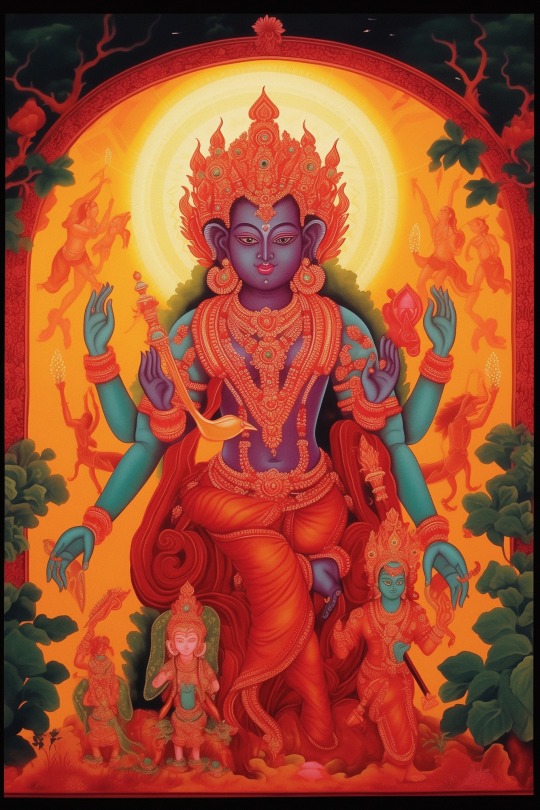
Madana Gopala “God of Love” Talon Abraxas
The form of Krishna known as Madanagopala is to be found in the sculptural programme of several Vaishnava temples of the Vijayayanagara era (fourteenth to eighteenth century) in southern India and, in particular, Tamil Nadu.
Madana is sweet enchantment, the seducer of the mind, and Gopala is the youthful herder of cows. In this form, Krishna has absorbed and subsumed the qualities of the god of love and sexual passion, Manmatha or Kama. The heats of lust and infatuation have been transformed into the rich rasa of transcendental love. Madanagopala sweetly sings and plays His flute, calling all to approach this exalted disposition – entering His world of luscious, enlightened duality where manifest form is the scintillating vibration of His eternal love play.
Madanagopala may be ten- or eight-armed and is depicted standing or seated upon a hexagon. As well as His flute, He carries various implements. Starting at the deity’s top right is the solar discus or chakra, the elephant goad/hook (ankusa) and then the flower arrow. From the top left, he holds the sacred conch (sankha), the three corded noose (pasa), and the sugarcane bow (ikshukodanda). The flower bow and arrow are both implements normally carried by Kama and his consort Rati, the goddess of pleasurable sensual enjoyment. Here, however, they are depicted as devotees of the Lord and they offer a garland of wild flowers from all seasons (vanamala). The single arrow held by Madanagopala is representative of Kama’s five powerful arrows of desire, each arrow representing a unique aspect of passion: excitement (unmadana), heat (tapana), drying up (sosana), paralyzing of normal bodily functions (stambhana) and full infatuation (sammohana).
The god of sensual love, Kama, is known by various epithets – Manmatha, Kandarpa, Madana, and Mara. Here He is shown on Krishna’s right. He holds aloft his standard – the makara banner from which Kama gets the additional name of Makaradhvaja, meaning that his flag is marked with the makara. It is symbolic of potent creation and fertility. Kama’s skin colour (nupura) is red, though variant forms are green or golden yellow. His father is Vishnu. The most famous mythological episode involving Kama is his having been burnt to ashes by Siva, whose meditation Kama had sought to disturb. Kama went on to be reborn as Krishna’s son, Pradyumna. He has two consorts, Priti (delight) and Rati (pleasure).
Rati is depicted on Madanagopala’s left. She is the daughter of Daksa Prajapati and her presence is likened to the youthful unfoldment of Vasant (spring) and with it, the longing in all nature for procreation. She is exceedingly attractive and well versed in seductive arts. Her hair is piled up into an elaborate ornamental knot (kesabandha), secured with a golden band decorated with fresh spring leaves and flowers. These impressive south Indian coiffures are to be seen on the figures of queens, princesses and high-ranking temple patrons.
As a pair, Kama and Rati are carved on pillars leading to the garbha griha. Their animal vehicles (vahanas), the goose, swan or parrot, are interchangeable. Lovely forms can be seen in the 17th century marriage hall (kalyana mandapa) in Kanchipuram’s Varadaraja temple. Outstanding even in the superlative world of Vijayanagara sculptural art are the splendid examples in Sri Villiputtar’s Andal temple complex. Here Rati sits astride a goose, admiring her own reflection in a mirror held aloft in her left hand, while the right holds a kohl stick.
Seated in the center at the bottom of the painting is Vishnu’s chief vahana, Garuda. He is shown as per his description in the Vishnu-dharmottara, with a body the color of an emerald, fierce bulging eyes and an eagle beak. There are many variant forms of Garuda – in North India one does not tend to see Garuda associated with Krishna, however, in the south, it is more frequent. In Vaishnava temples, Garuda is installed in a small shrine facing the garba griha (home of the main deity), or on a high pillar within the temple compound, or just outside the main entrance, as in Puri’s celebrated Jagganath temple.
Forming a canopy over Madanagopala’s head is the lush foliage of a Kalpakataru or wish-fulfilling tree. The tree boasts many types of flowers and fruits and is perpetually in bloom. It is a feature of the god’s celestial realms. Nestled within its foliage are several kili (parrots) and a mayil (peacock). Krishna cherishes both types of bird and is said to have several as pets. Midway to Madanagopala’s right is his favorite tree, the kadamba. It bears small, globular orange/yellow flowers with a beautiful perfume. In season, the flowers are much favoured for use as garlands. Growing at the Lord’s feet are a profusion of flowering sacred tulasi, a plant considered an incarnated goddess. Tulasi leaves are used as offerings to all Vaishnava deities and its wood is favoured for use in malas for mantra sadhana.
The two brown decorative panels at the sides of the arch display kinnaras. The term kinnara translates as something like ‘what are these?’ as they are a bizarre and beautiful com-posite of various creatures, animal, human and divine. They are usually shown playing musical instruments – especially, the veena. Kinnaras have intoxicating siren-like voices, but are aus-picious in nature and loving by disposition. They are often carved in light relief on temple pillars.
Lastly, within the orange border are two decorated friezes of the Vaishnava sectarian marking or Namam. The Namam is worn on the forehead and is typically of two forms (of course, there are variants). The form depicted on the upper strip is the Vadagalai which is U-shaped. The one on the lower strip is the Tengalai which is Y or V shaped. The central stripe between the U or V is known as the Tiruchurnam and is traditionally made of a lime and saffron mix or red ocher. The meaning of the Tiruchurnam is the same as that of the bindu: the whole-ness of divinity and the point of utmost potency from which all manifests. The wearing of the Namam is a highly important preparation for all kinds of ritual action or worship within the Vaishnava fold and is considered to be sanctifying for both the wearer and observer.
21 notes
·
View notes
Text
Qutab Minar, New Delhi.

Qutab Minar or “Tower of Victory” 73 m-high tower of victory was built-in 1193 by Qutab-ud-din Aibak. Quwwat-ul-Islam Mosque was the first mosque was built next to it.
Mughal Architecture are famous world wide, but are those really Mughal architecture or stolen pieces from the indigenous people that lived there, that were subjected to slavery and unspeakable tyranny?
Quwwat-ul-Islam Mosque was built by pieces and carvings of 27 destroyed Hindu temples, as it is stated clearly below -
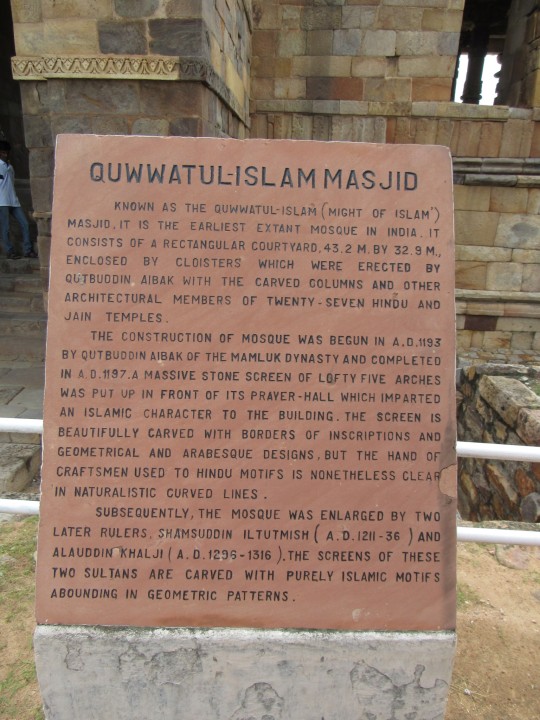
As it is a known fact that Mughals destroyed approximately 40,000 Hindu and Jain temples during their ~300 years of invasion in India.
There are many deities in the complex that are placed in the most disrespectful way. It is not a doubt that this complex, the minar especially was to mock the Hindus that it belonged to. There is carvings of Cows, a holy and sacred animal in Hinduism, that can be seen in many Hindu temples to this day, but not in any mosque whatsoever.
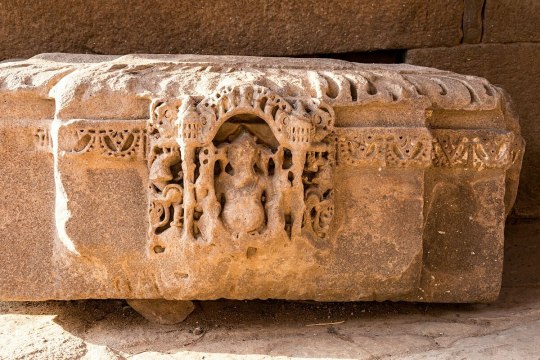
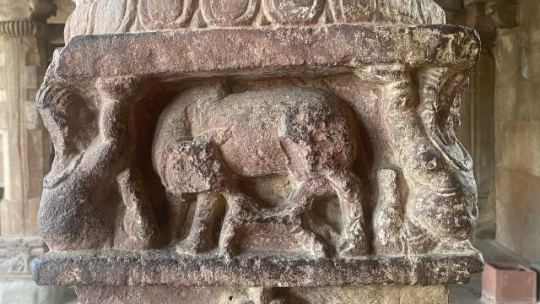
According to Islam, The bell being instrument of Satan, yet there are carvings on pillars of Bells - an instrument that is widely and always used in Hindu Practices.
There are Brahmi and Sanskrit inscriptions found in various spots in the pillar and around the complex.
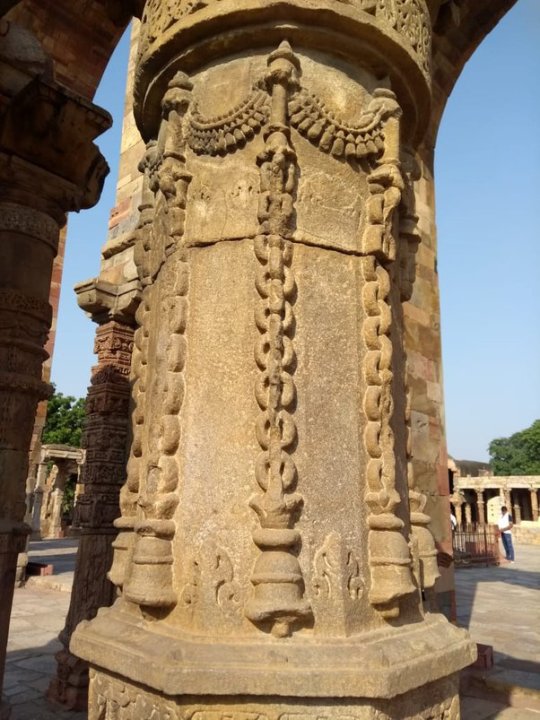
So what Exactly was Qutab Minar.
The township adjoining the Kutub Minar is known as Mehrauli. That is a Sanskrit word Mihira-awali. It signifies the town- ship where the well known astronomer Mihira of Vikramaditya's court lived along with his helpers, mathematicians and technicians. They used the so-called Kutub tower as an observation post for astronomical study. Around the tower were pavilions dedicated to the 27 constellations of the Hindu Zodiac.
The Hindu title of the tower was Vishnu Dhwaj (i.e. Vishnu’s standard) alias Vishnu Stambh alias Dhruv Stambh (i.e., a polar pillar) obviously connoting an astronomical observation tower.
The Sanskrit inscription in Brahmi script on the non-rusting iron pillar close by proclaims that the lofty standard of Vishnu was raised on the hillock named Vishnupad Giri. That description indicates that a statue of the reclining Vishnu initiating the creation was consecrated in the central shrine there which was ravaged by Mohammad Ghori and his henchman Qutubuddin.
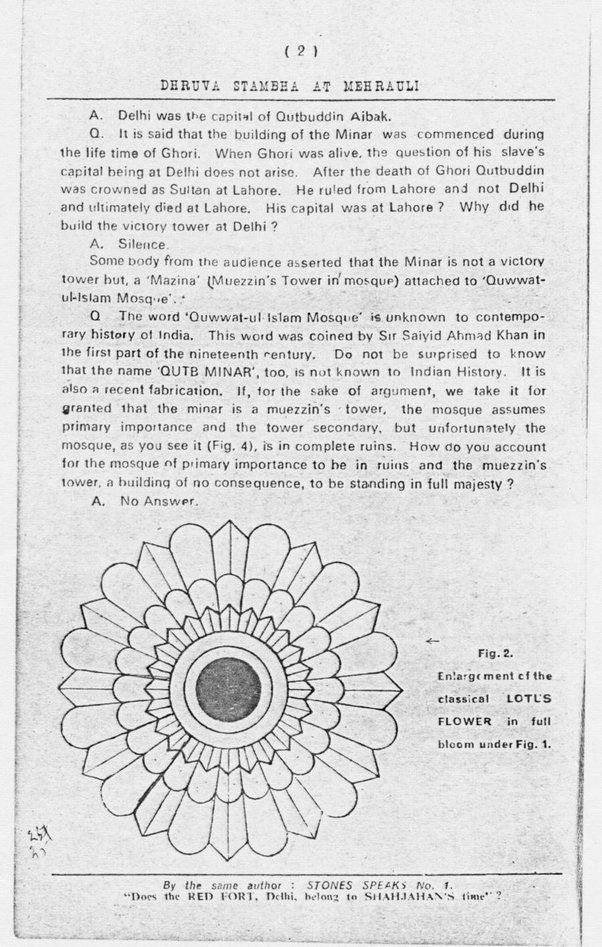
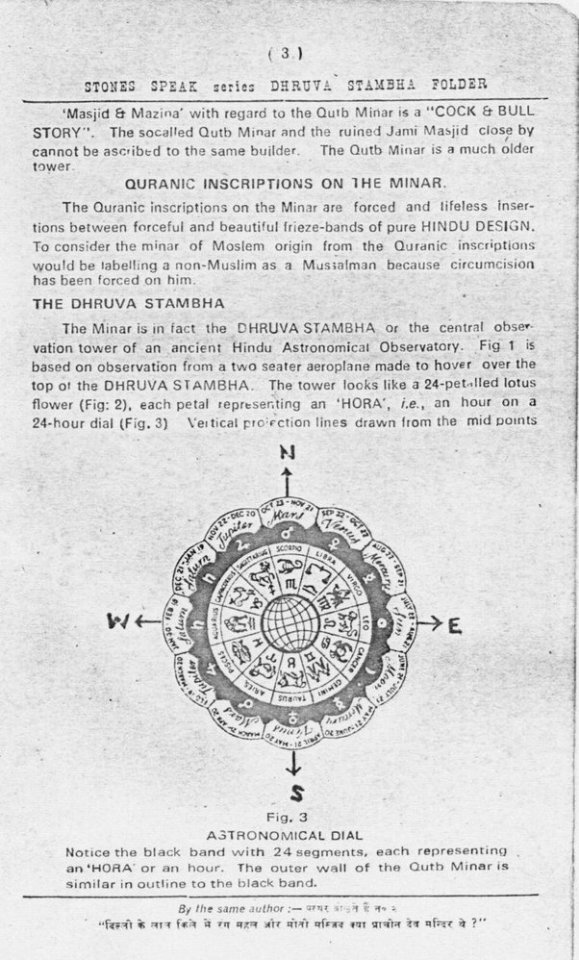
Presence of lotus flowers on the minar’s inscriptions. Lotus flowers do not feature in any Islamic structures of that era. Lotus flower buds have been covered with verses from the Quran. Lotus flowers if we observe are seen in Hindu temples.
Know your history.
धर्मो रक्षति रक्षितः
#qutab minar#mughal architecture#hinduism#hinduphobia#sanatan dharma#indian architecture#india#bharat#pseudo secularism#new delhi#mughal invasion#ancient india#colonization#hindublr#desiblr
47 notes
·
View notes
Text
Mumbai Airport Taxi Service Operator, Mumbai Airport, Mumbai, Maharashtra, India
WhatsApp: +919370314751 / 52
Cell: +917720079131 / 32
Cell: +919370314751 / 52
Mumbai Airport: Chhatrapati Shivaji International Airport
Chhatrapati Shivaji Maharaj International Airport, Mumbai, formerly known as Sahar International Airport, is the primary international airport serving the Mumbai Metropolitan Area, India.
Mumbai (formerly called Bombay): City in Maharashtra
Mumbai (formerly called Bombay) is a densely populated city on India’s west coast. A financial center, it's India's largest city. On the Mumbai Harbour waterfront stands the iconic Gateway of India stone arch, built by the British Raj in 1924. Offshore, nearby Elephanta Island holds ancient cave temples dedicated to the Hindu god Shiva. The city's also famous as the heart of the Bollywood film industry.
Mumbai Airport Taxi Service Operator, Mumbai Airport, Mumbai, Maharashtra, India
WhatsApp: +919370314751 / 52
Cell: +917720079131 / 32
Cell: +919370314751 / 52
Mumbai Airport: Chhatrapati Shivaji International Airport
Chhatrapati Shivaji Maharaj International Airport, Mumbai, formerly known as Sahar International Airport, is the primary international airport serving the Mumbai Metropolitan Area, India.
Mumbai (formerly called Bombay): City in Maharashtra
Mumbai (formerly called Bombay) is a densely populated city on India’s west coast. A financial center, it's India's largest city. On the Mumbai Harbour waterfront stands the iconic Gateway of India stone arch, built by the British Raj in 1924. Offshore, nearby Elephanta Island holds ancient cave temples dedicated to the Hindu god Shiva. The city's also famous as the heart of the Bollywood film industry.
#Mumbai Airport Taxi Service Operator#Mumbai Airport#Mumbai#Maharashtra#India#WhatsApp: +919370314751 / 52#Cell: +917720079131 / 32#Cell: +919370314751 / 52#[email protected]#https://sites.google.com/site/mumbaiairporttaxioperator/#Mumbai Airport: Chhatrapati Shivaji International Airport#Chhatrapati Shivaji Maharaj International Airport#formerly known as Sahar International Airport#is the primary international airport serving the Mumbai Metropolitan Area#India.#Mumbai (formerly called Bombay): City in Maharashtra#Mumbai (formerly called Bombay) is a densely populated city on India’s west coast. A financial center#it's India's largest city. On the Mumbai Harbour waterfront stands the iconic Gateway of India stone arch#built by the British Raj in 1924. Offshore#nearby Elephanta Island holds ancient cave temples dedicated to the Hindu god Shiva. The city's also famous as the heart of the Bollywood f
1 note
·
View note
Photo

Khajuraho
Khajuraho was an ancient city in the Madhya Pradesh region of northern India. From the 10th to 12th century CE it was the capital of the Chandella kings who ruled Bundelkhand. Despite Khajuraho's once great reputation as an important cultural centre there are no surviving non-religious buildings, but the presence of 35 Hindu and Jain temples make it one of the most significant historical sites in India today and worthy of its name given by the 11th century CE Muslim historian Abu Rihan Alberuni as 'the City of the Gods'. Khajuraho is listed by UNESCO as a World Heritage Site.
Architectural Highlights
Most of the temples at Khajuraho were built using sandstone but four also used granite in their construction. In the latter group is the Chaunsat Yogini (64 tantric goddesses), built c. 875-900 CE, which has 64 shrine rooms arranged around a rectangular courtyard. Next in the site's development came the Lalguan Mahadeva, Brahma, and Matangesvara temples which are all quite plain in design and decoration compared to the later temples.
The majority of temples at Khajuraho were constructed between 950 and 1050 CE and are either Hindu (Saiva or Vaisnava) or Jain. The most famous is the Kandariya Mahadeo built in the early 11th century CE and dedicated to Shiva. The more or less contemporary Laksmana temple was built in 954 CE by King Dhanga (r. 950-999 CE) to celebrate independence from the Gurjara-Pratihara rulers and has a similar layout and exterior to the Kandariya Mahadeo. So too does the Visvanatha temple (c. 1002 CE) which was designed by Sutradhara Chhichchha. Both temples have shrines at each corner of their terrace platforms. The Laksmana was dedicated to Vishnu and its terrace is of particular note as it carries a narrative frieze running around all four sides: Elephants, warriors, hunters, and musicians form a procession watched by a ruler and his female attendants.
Other notable temples at the site include the single-towered Caturbhuja and Vamana, the squat Matulunga, and the rectangular, more austere Parshvanatha Jain temple with its unique shrine added to the rear of the building (c. 950-970 CE). Probably the latest temple at Khajuraho is the Duladeo which was built on a star-plan.
Continue reading...
61 notes
·
View notes
Text
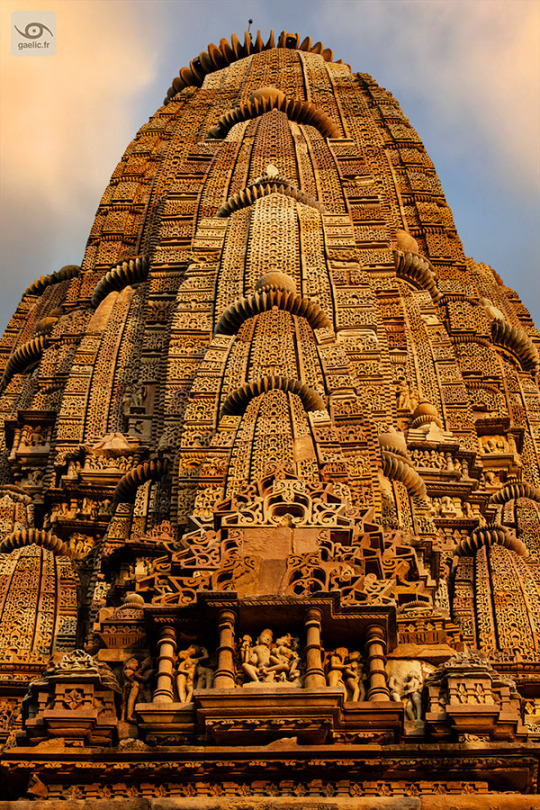
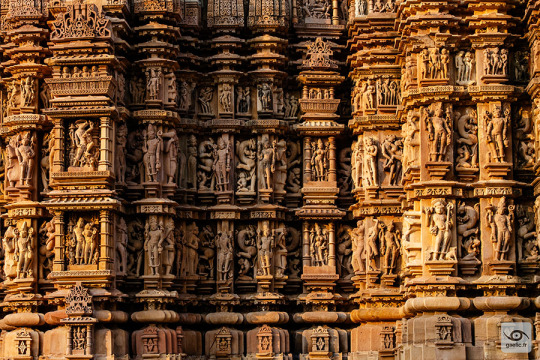
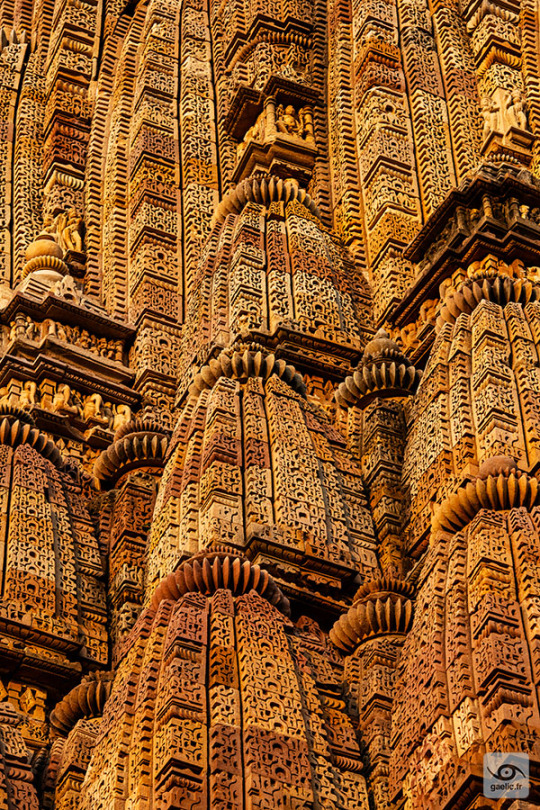
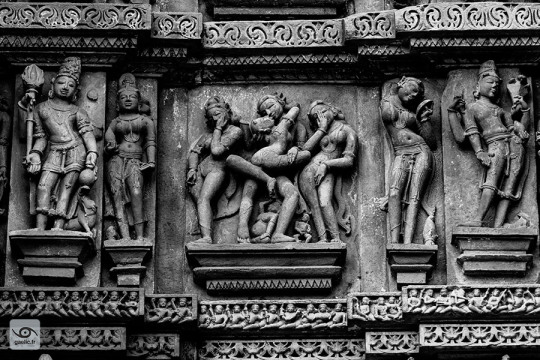

Naughty temples
2023-11-02 India, Madhya Pradesh, Khajuraho
The Khajuraho Group of Monuments is a group of Hindu temples and Jain temples in Chhatarpur district, Madhya Pradesh, India. The temples are famous for their nagara-style architectural symbolism and their erotic sculptures.
#travel#india#photography#architecture#gaelic69#trip#voyage#wanderlust#photographer#temple#sculpture#temples#unesco
13 notes
·
View notes
Text
Famous Temple Of Rajasthan, (Rajasthan Devdarshan)
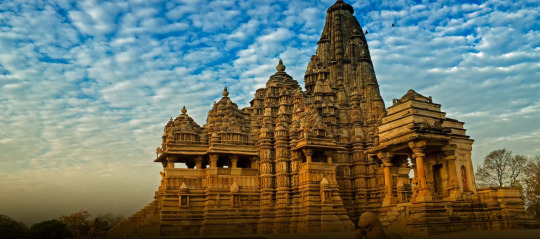
Rajasthan, known for its rich history, vibrant culture, and royal heritage, is also home to some of India’s most magnificent temples. These temples are not only architectural marvels but also spiritual sanctuaries, attracting visitors from across the world. Here’s a look at some of the most famous temples in Rajasthan, each reflecting the state’s glorious legacy and profound spiritual traditions.
1. Dilwara Temples, Mount Abu
The Dilwara Temples, located in Mount Abu, are a group of five Jain temples renowned for their stunning marble architecture and intricate carvings. Built between the 11th and 13th centuries, the temples showcase exquisite craftsmanship with detailed carvings on pillars, ceilings, and walls. The most famous of the Dilwara temples is the Vimal Vasahi Temple, dedicated to Lord Adinath, the first Jain Tirthankara. The delicate marble work and precision of design make it a prime example of Jain architecture and devotion.
2. Brahma Temple, Pushkar
The Brahma Temple in Pushkar is one of the few temples in the world dedicated to Lord Brahma, the Hindu god of creation. This ancient temple, believed to be over 2000 years old, is surrounded by myths and legends. Its red spire and distinct architecture make it easily recognizable. The Pushkar Lake, adjacent to the temple, holds significant religious importance, especially during the annual Pushkar Camel Fair, when thousands of pilgrims visit to take a holy dip in the lake and offer prayers at the Brahma Temple.
3. Govind Dev Ji Temple, Jaipur
Located in the City Palace complex in Jaipur, the Govind Dev Ji Temple is dedicated to Lord Krishna. Built during the reign of Raja Sawai Jai Singh II in the 18th century, the temple features a simple yet elegant design. The idol of Lord Krishna in this temple is believed to have been brought from Vrindavan and holds great reverence among the devotees. The temple is especially lively during Janmashtami, the birth anniversary of Lord Krishna, attracting devotees and tourists alike.
4. Karni Mata Temple, Deshnoke
Located in Deshnoke, near Bikaner, the Karni Mata Temple is unique and famous for its association with rats. The temple is dedicated to Karni Mata, a revered sage believed to be an incarnation of Goddess Durga. The temple houses thousands of rats, considered sacred and known as "kabbas." Devotees believe that spotting a white rat is highly auspicious. The temple’s intricate silver gates and marble carvings add to its allure, making it a unique pilgrimage site in Rajasthan.
5. Eklingji Temple, Udaipur
The Eklingji Temple, located about 22 kilometers from Udaipur, is dedicated to Lord Shiva and serves as the presiding deity of the Mewar dynasty. Built in the 8th century, the temple complex comprises 108 small temples, each showcasing splendid architecture. The main deity, a four-faced idol of Lord Shiva, is crafted in black marble. The temple attracts devotees, particularly during Maha Shivaratri, when it is decorated with flowers, and grand rituals are performed.
6. Ranakpur Jain Temple
The Ranakpur Jain Temple, located between Jodhpur and Udaipur, is dedicated to Lord Adinath and is one of the most prominent Jain temples in Rajasthan. Built in the 15th century, the temple is famous for its 1444 marble pillars, each uniquely carved. The intricate detailing of the pillars and the serene ambiance of the temple attract not only devotees but also architecture enthusiasts.
#Dilwara Temples#Brahma Temple#Govind Dev Ji#Ranakpur Jain Temple#Karni Mata Temple#Eklingji Temple#Mount Abu#Pushkar#Jaipur#Udaipur#Pali#Bikaner#Jain Temples#Lord Brahma#Lord Krishna#Lord Shiva#Architecture#Spirituality#Pilgrimage#Rajasthan
4 notes
·
View notes